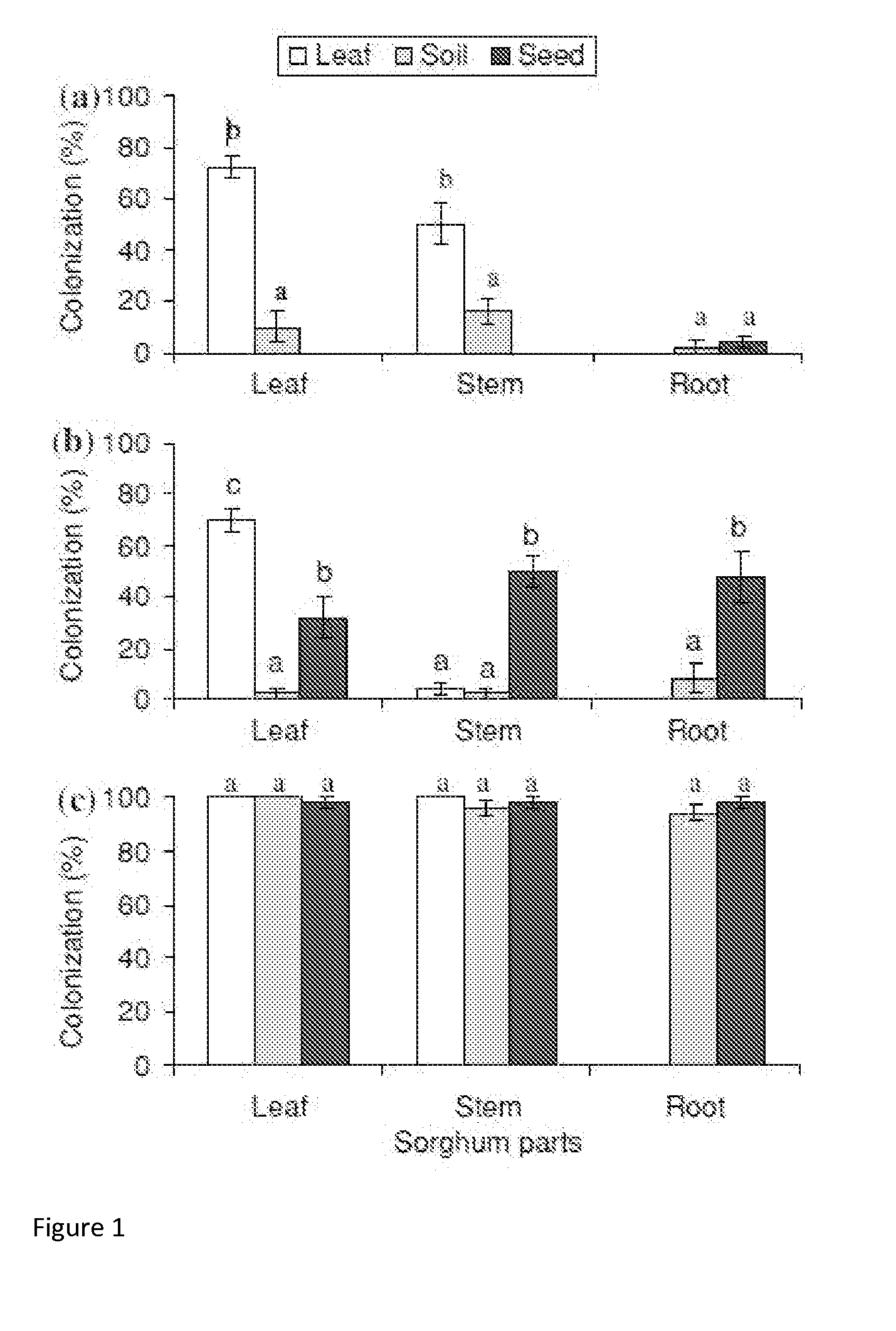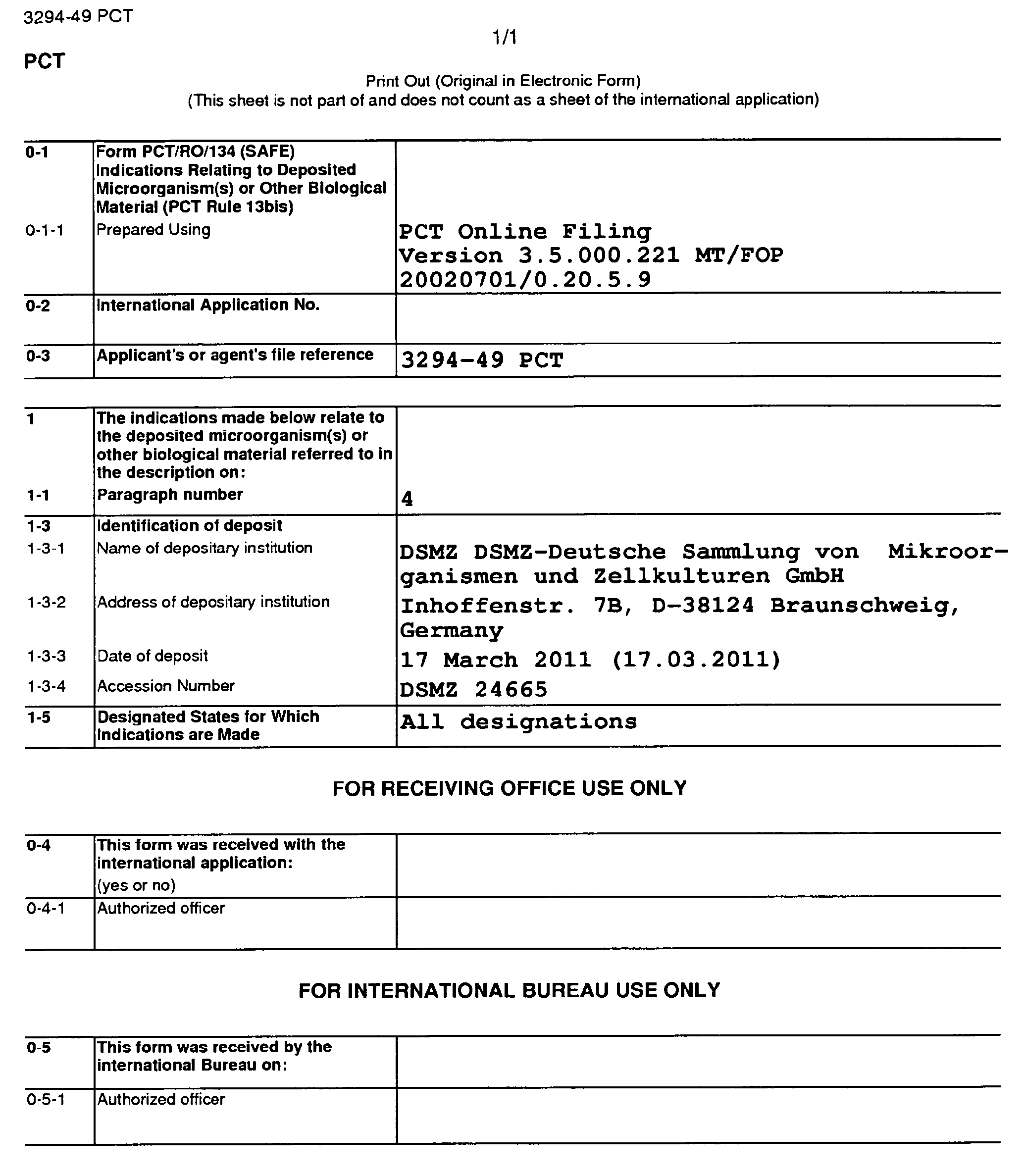Bio-pesticide and method for pest control
- Summary
- Abstract
- Description
- Claims
- Application Information
AI Technical Summary
Benefits of technology
Problems solved by technology
Method used
Image
Examples
example 1
Materials and Methods
[0046]The experiments used strain ATP02 of B. bassiana, which had been isolated from the maize stem borer B. fusca at the Haramaya University, Ehtiopia. This fungal strain was selected based on its virulence to the spotted stem borer C. partellus according to the methods as described in previous studies for other strains (Tefera and Pringle, 2004, Biocon Sci Technol, 14, 849-853). Fungus cultures were maintained at 25° C. on Sabouraud dextrose agar (SDA), containing 10 g enzymatic digest casein, 40 g dextrose, and 15 g agar. Conidia were obtained from 3-week-old sporulating cultures. The conidia were harvested by scraping the surface of the culture with a sterile camel hairbrush into a 500 ml glass beaker containing 50 ml sterile distilled water plus Tween 80 (0.1% v / v; Difco™). The conidial suspension was prepared by mixing the solution with a magnetic stirrer for 5 min. The conidia concentration was then adjusted to the desired concentration of 1×108 con...
example 2
Materials and Methods
Fungal Strains and Conidia Preparation
[0065]The experiments used strain ATP02 of B. bassiana for testing their ability to endophytically colonize plants and their pathogenicity against third instar H. armigera larvae. Strain ATP02, endophytically colonizing the plant, was tested for possible effects on mortality and growth of H. armigera. The fungal strain had been isolated from H. armigera and Busseola fusca, respectively, at the Haramaya University, Ethiopia. The fungal strain was selected based on their efficacy in endophytic colonization (100%) of sorghum, see above. Fungus cultures were maintained at 25° C. on Sabouraud dextrose agar (SDA), containing 10 g enzymatic digest casein, 40 g dextrose, and 15 g agar. Conidia were obtained from 3-week-old sporulating cultures. The conidia were harvested by scrapping the surface of the culture with a sterile camel hairbrush into a 500-ml glass beaker containing 50 ml sterile distilled water plus Tween 80 (0.1% v / v) ...
experiment i
y Test
[0073]There was no control mortality and hence mortality was not adjusted for the control. Larvae suffered the highest mortality (100%) when treated with the strain ATP02. High mycosis (100%) was recorded from larvae treated with ATP02. The survival time of larvae when treated with ATP02 was significantly low (4.3 days).
Experiment II: Effect of Endophytic B. bassiana (Strain Atp02) on Mortality and Growth of H. armigera
[0074]Larvae fed on endophytic ATP02 suffered high mortality (86%) and mycosis (86%) as opposed to zero mortality and mycosis in the control. There was no difference in larval initial weight (F=1.660; df=1.59; p=0.23); however, there were significant differences in larval final weight (F=168.429; df=1.59; pH. armigera larvae feeding on V. faba endophytically colonized by ATP02 and the control (table 3).
TABLE 3Mean initial and, final weight and percent weight gain of H. armigeralarvae feeding on V. faba endophytically colonized by B. bassiana(BB-04) and the cont...
PUM
 Login to View More
Login to View More Abstract
Description
Claims
Application Information
 Login to View More
Login to View More - R&D
- Intellectual Property
- Life Sciences
- Materials
- Tech Scout
- Unparalleled Data Quality
- Higher Quality Content
- 60% Fewer Hallucinations
Browse by: Latest US Patents, China's latest patents, Technical Efficacy Thesaurus, Application Domain, Technology Topic, Popular Technical Reports.
© 2025 PatSnap. All rights reserved.Legal|Privacy policy|Modern Slavery Act Transparency Statement|Sitemap|About US| Contact US: help@patsnap.com


